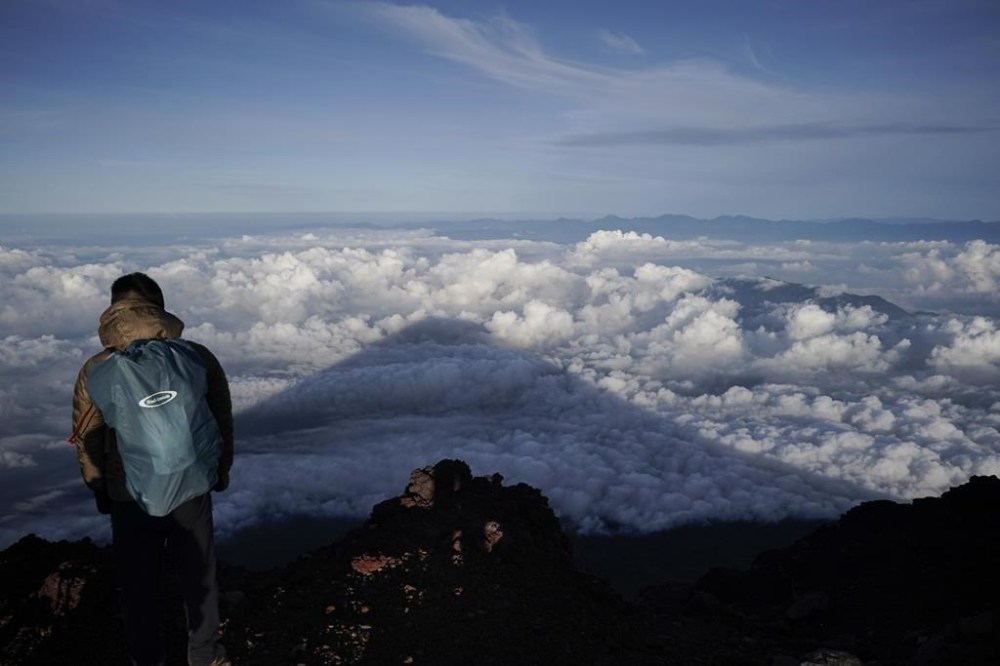By: Mari Yamaguchi, The Associated Press
Posted: 9:35 AM CDT Monday, May. 20, 2024
Last Modified: 9:37 AM CDT Monday, May. 20, 2024
TOKYO (AP) — Those who want to climb one of the most popular trails of the iconic Japanese Mount Fuji will now have to reserve ahead and pay a fee as the picturesque stratovolcano struggles with overtourism, littering and those who attempt rushed “bullet climbing,” putting lives at risk.
Read this article for free:
To continue reading, please subscribe:
Monthly Digital Subscription
$19 $0 for the first 4 weeks*
Enjoy unlimited reading on winnipegfreepress.com
Read the E-Edition, our digital replica newspaper
Access News Break, our award-winning app
Play interactive puzzles
Continue
*No charge for 4 weeks then billed as $19 every four weeks (new subscribers and qualified returning subscribers only). Cancel anytime.
TOKYO (AP) — Those who want to climb one of the most popular trails of the iconic Japanese Mount Fuji will now have to reserve ahead and pay a fee as the picturesque stratovolcano struggles with overtourism, littering and those who attempt rushed “bullet climbing,” putting lives at risk.
Read unlimited articles for free today:
TOKYO (AP) — Those who want to climb one of the most popular trails of the iconic Japanese Mount Fuji will now have to reserve ahead and pay a fee as the picturesque stratovolcano struggles with overtourism, littering and those who attempt rushed “bullet climbing,” putting lives at risk.
The Yamanashi prefecture said in a statement via the Foreign Press Center of Japan Monday it introduced new rules for the climbing season, starting July 1 to Sep. 10 for those hiking the Yoshida Trail on the Yamanashi side of the 3776 meter- (nearly 12,300 feet-) high mountain, designated a UNESCO World Cultural Heritage site in 2013.
Only 4,000 climbers will be allowed to enter the trail per day; 3,000 slots will be available for online booking at a fee of 2,000 yen (about $18), and the remaining 1,000 can be booked in person on the day of the climb.

FILE – The shadow of Mount Fuji is casted on clouds hanging below the summit, Tuesday, Aug. 27, 2019, in Japan. Those who want to climb one of the most popular trails of the iconic Japanese Mount Fuji will now have to reserve ahead and pay a fee as the picturesque stratovolcano struggles with overtourism, littering and those who attempt rushed “bullet climbing,” putting lives at risk. (AP Photo/Jae C. Hong, File)
Climbers can book their slots via Mount Fuji Climbing’s official website, jointly run by the Environment Ministry and Mt. Fuji’s two home prefectures Yamanashi and Shizuoka.
Mt. Fuji is divided into 10 stations, and there are four “5th stations” halfway up the mountain from where the four trails — the Yoshida, Fujinomiya, Subashiri, and Gotemba — start to the top.
Under the new system, climbers need to choose whether they will do a day hike or stay overnight at the several available huts across the trail. Once they input their information and the day of the climb, they are given a QR code to be scanned at the 5th station. Those who have not booked an overnight hut will be sent back down and not allowed to climb between 4 p.m. and 3 a.m., mainly to stop climbers who rush to the summit without adequate rest, raising safety concerns, authorities said.
Yamanashi Gov. Kotaro Nagasaki thanked people, in a statement, for their understanding and cooperation in helping conserve Mt. Fuji.
The Shizuoka prefecture, southwest of Mt. Fuji, where climbers can also access the mountain, has sought a voluntary 1,000-yen ($6.4) fee per climber since 2014 and is considering additional ways to balance tourism and environmental protection.
The number of Mt. Fuji climbers during the season in 2023 totaled 221,322, according to the Environment Ministry.
The announcement came just as a town in Shizuoka was to set up a huge black screen on a sidewalk to block a view of Mt. Fuji because of tourists overcrowding the area to take photos with the mountain as a background of a convenience store, a social media phenomenon known as “Mt. Fuji Lawson.” This has inconvenienced locals and disrupted their businesses and road traffic.
Over-tourism has also become a growing issue at other popular tourist destinations such as Kyoto and Kamakura as foreign visitors have flocked to Japan in droves since the Coronavirus pandemic restrictions were lifted, in part due to the weaker yen.
Last year, Japan had more than 25 million visitors, and the figures in 2024 are expected to surpass nearly 32 million, a record from 2019, according to the Japan National Tourism Organization.
Read Later
>>> Read full article>>>
Copyright for syndicated content belongs to the linked Source : WinnipegFreePress – https://www.winnipegfreepress.com/arts-and-life/life/2024/05/20/we-cant-have-nice-things-japan-imposes-new-rules-to-climb-mt-fuji-to-fight-overtourism-littering




















![Forest ecology cannot be reduced to arithmetic, says M.I. Varghese [Interview] – Mongabay-India](https://earth-news.info/wp-content/uploads/2025/12/328946-forest-ecology-cannot-be-reduced-to-arithmetic-says-mi-varghese-interview-mongabay-india-350x250.jpg)










![Forest ecology cannot be reduced to arithmetic, says M.I. Varghese [Interview] – Mongabay-India](https://earth-news.info/wp-content/uploads/2025/12/328946-forest-ecology-cannot-be-reduced-to-arithmetic-says-mi-varghese-interview-mongabay-india-120x86.jpg)